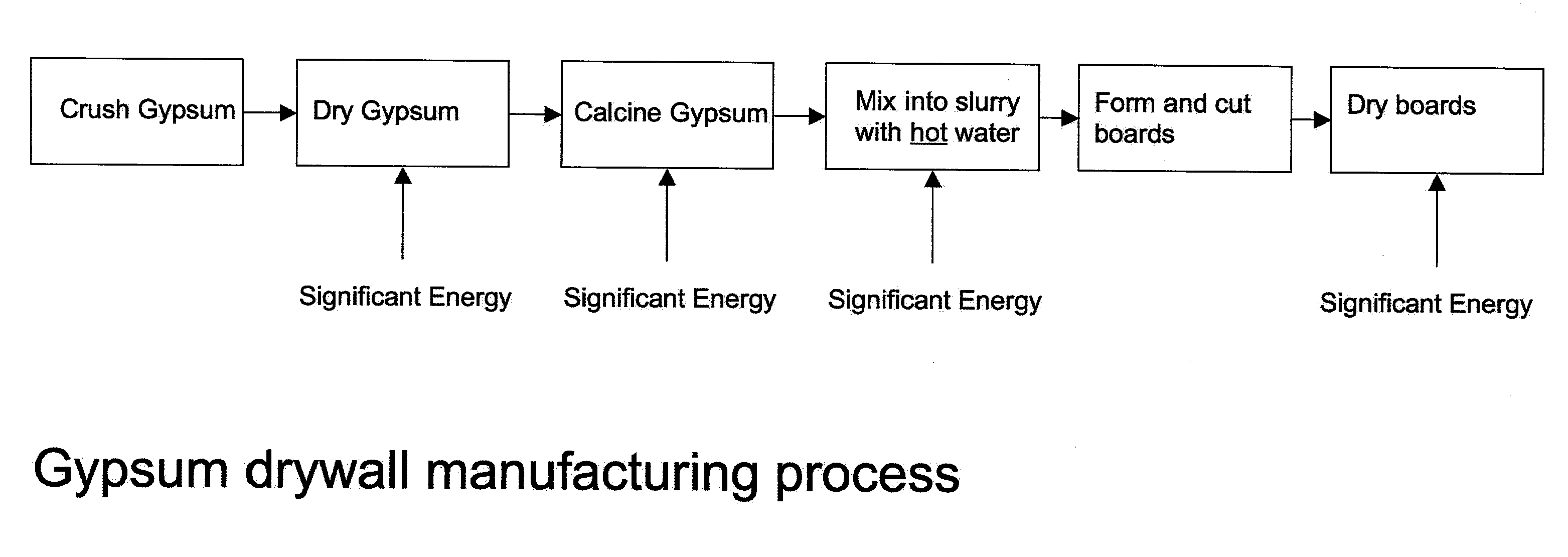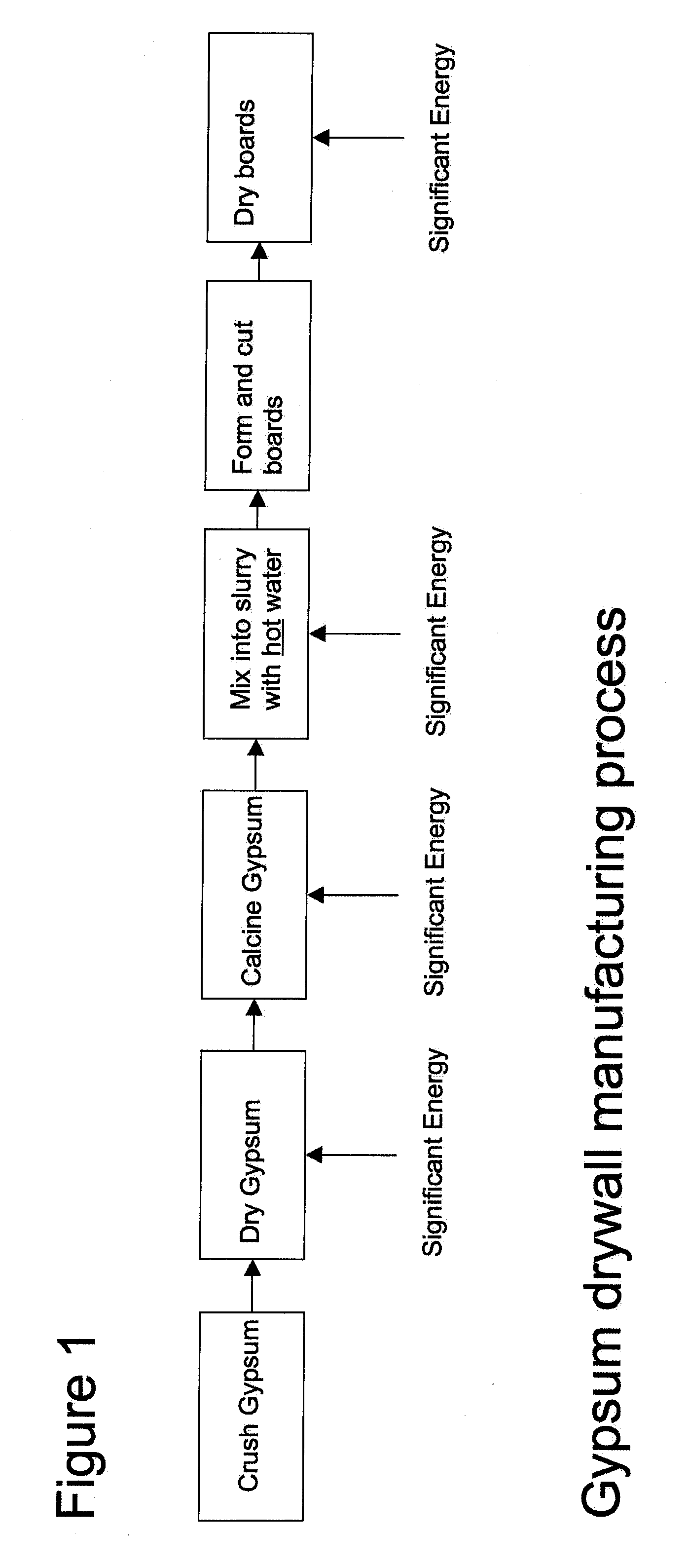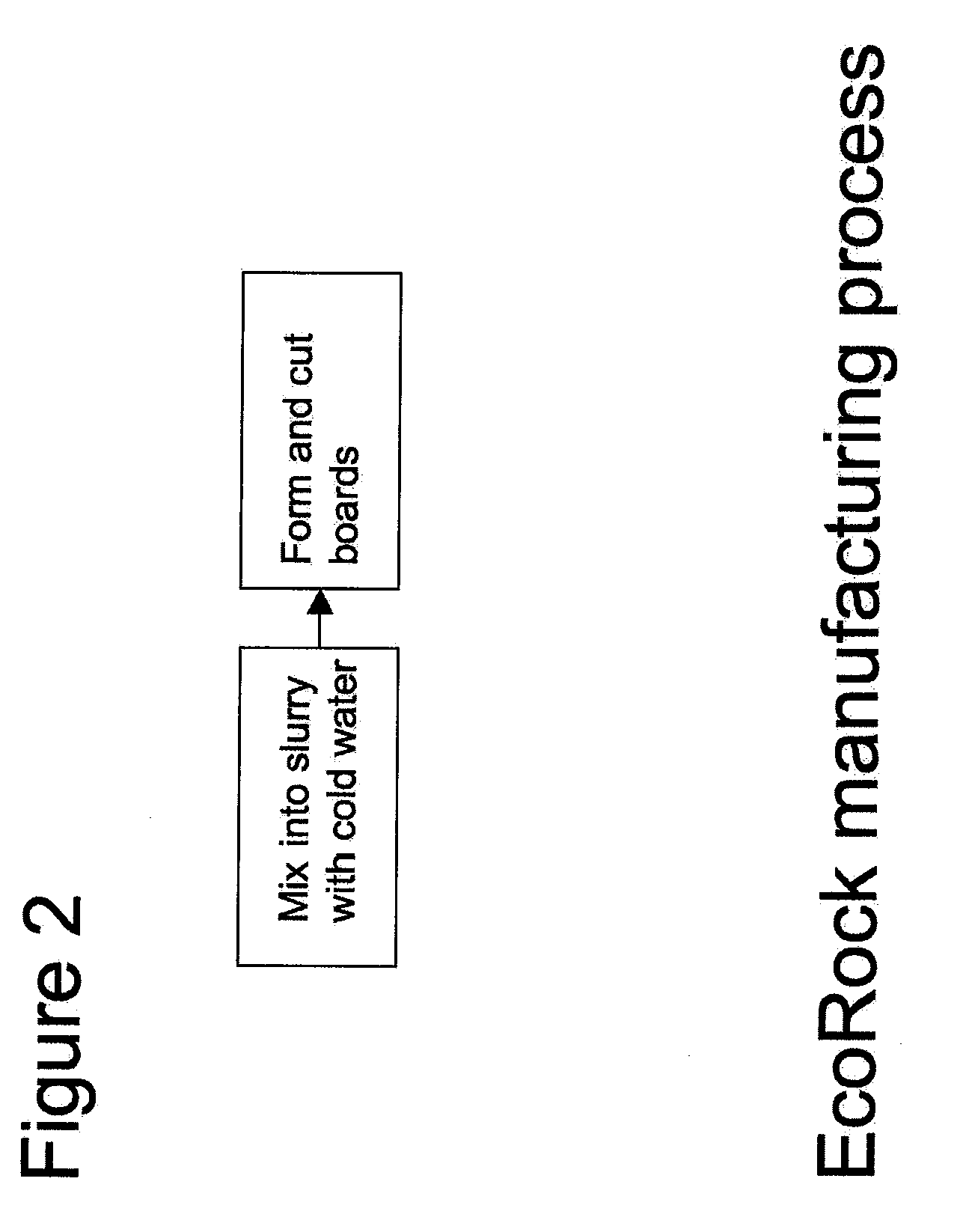Low embodied energy wallboards and methods of making same
a wallboard and low-embodied energy technology, applied in the direction of natural mineral layered products, solid waste management, water-setting substance layered products, etc., can solve the problems of requiring significant energy in all these processes, few other building materials exist today, and the calculation process itself is energy-intensive, so as to reduce the embodied energy and reduce the emission of greenhouse gas
- Summary
- Abstract
- Description
- Claims
- Application Information
AI Technical Summary
Benefits of technology
Problems solved by technology
Method used
Image
Examples
example 1
[0036]In one embodiment of the present invention, a dry mix of powders is prepared by mixing calcium silicate, biofibers and boric acid. Then phosphoric acid diluted by water is added to the dry mix followed by the addition of foam resulting in the following materials by approximate weight in percentages:
Phosphoric acid 17%Water 19%Calcium silicate 57%Foam5.0%Biofibers0.5%Boric acid1.5%
[0037]Phosphoric acid and calcium silicate together form a binder in the slurry and thus are present in the to-be-formed core of the EcoRock wallboard. Perlite and / or fly ash can be added to the slurry if desired in quantities up to approximately twenty percent (20%) by weight of the resulting product. Along with the foam, these materials form a filler in the slurry. The biofibers add flexural strength to the core when the slurry has hardened. Boric acid is a retardant used to slow the exothermic reaction and thus slow down the setting of the slurry.
[0038]The wet mix (the “Initial Slurry”) is mixed by...
example 2
[0043]In another embodiment, the same amounts of dry powders as in Example 1 are mixed together in the same proportions, but the boric acid is left out. In this case, the reaction occurs much more rapidly such that the boards may be cut and removed in under 2 minutes
example 3
[0044]In another embodiment, the same proportions of materials as in Example 1 are mixed together, but the foam is substituted with flyash. This produces a board of increased strength and weight. This board utilizes recycled materials and thus may cater even more to national environmental building programs such as LEED, developed by the United States Green Building Council.
PUM
| Property | Measurement | Unit |
|---|---|---|
| thickness | aaaaa | aaaaa |
| Embodied Energy | aaaaa | aaaaa |
| temperatures | aaaaa | aaaaa |
Abstract
Description
Claims
Application Information
 Login to View More
Login to View More - R&D
- Intellectual Property
- Life Sciences
- Materials
- Tech Scout
- Unparalleled Data Quality
- Higher Quality Content
- 60% Fewer Hallucinations
Browse by: Latest US Patents, China's latest patents, Technical Efficacy Thesaurus, Application Domain, Technology Topic, Popular Technical Reports.
© 2025 PatSnap. All rights reserved.Legal|Privacy policy|Modern Slavery Act Transparency Statement|Sitemap|About US| Contact US: help@patsnap.com



